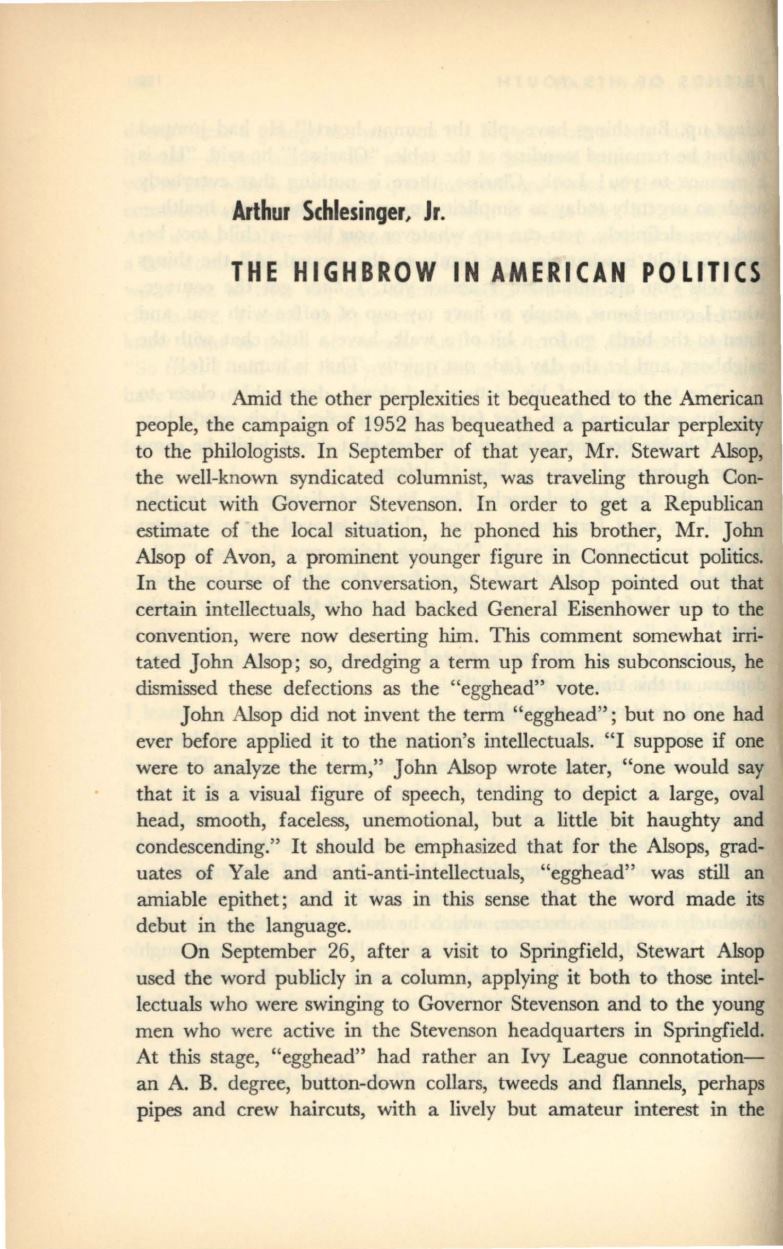
Arthur Schlesinger, Jr.
THE HIGHBROW IN AME ,RICAN POLITICS
Amid the other perplexities it bequeathed to the American
people, the campaign of 1952 has bequeathed a particular perplexity
to the philologists.
In
September of that year, Mr. Stewart Alsop,
the well-known syndicated columnist, was traveling through Con–
necticut with Governor Stevenson.
In
order to get a Republican
estimate of the local situation, he phoned his brother, Mr. John
Alsop of Avon, a prominent younger figure in Connecticut politics.
In
the course of the conversation, Stewart Alsop pointed out that
certain intellectuals, who had backed General Eisenhower up to the
convention, were now deserting him. This comment somewhat irri–
tated John Alsop; so, dredging a term up from his subconscious, he
dismissed these defections as the "egghead" vote.
John Alsop did not invent the term "egghead"; but no one had
ever before applied it to the nation's intellectuals. "I suppose if one
were to analyze the term," John Alsop wrote later, "one would say
that it is a visual figure of speech, tending to depict a large, oval
head, smooth, faceless, unemotional, but a little bit haughty and
condescending."
It
should be emphasized that for the Alsops, grad–
uates of Yale and anti-anti-intellectuals, "egghead" was still an
amiable epithet; and it was in this sense that the word made its
debut in the language.
On September 26, after a visit to Springfield, Stewart Alsop
used the word publicly in a column, applying
it
both to those intel–
lectuals who were swinging to Governor Stevenson and to the young
men who were active in the Stevenson headquarters in Springfield.
At this stage, "egghead" had rather an Ivy League connotation–
an
A.
B.
degree, button-down collars, tweeds and flannels, perhaps
pipes and crew haircuts, with a lively but amateur interest in the


